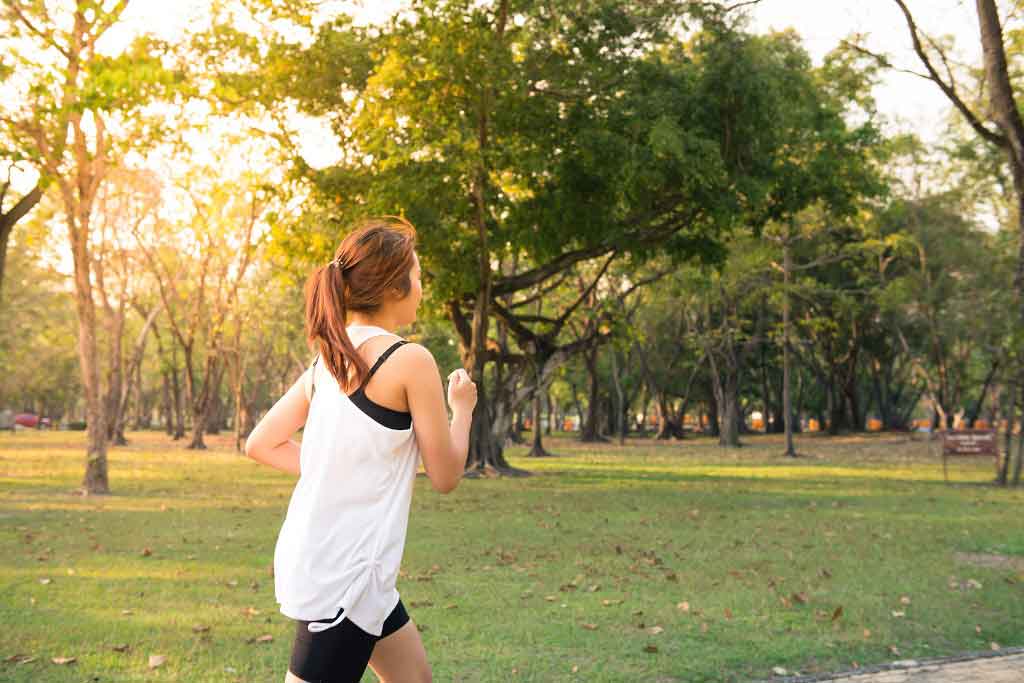Pokémon no-go: game's exercise effects short-lived in most players
Lifestyle and exercise
"Pokémon GO doesn't help people to stay fit and healthy," the Mail Online reports. A survey of US players of the popular augmented reality game found the average player's daily step rate fell back to pre-game levels after six weeks…
"Pokémon GO doesn't help people to stay fit and healthy," the Mail Online reports. A survey of US players of the popular augmented reality game found the average player's daily step rate fell back to pre-game levels after six weeks.
Pokémon GO is an app which encourages players to explore real-world destinations while "catching" Pokémon (fantasy monsters). Players are also encouraged to walk certain distances, such as 5km, to "incubate" Pokémon eggs.
The survey tracked steps of adult players of the game and found people walked for an average 11 minutes more per day in the first week they downloaded the game, but that this effect didn't last.
Researchers recorded an average daily increase of 995 steps in the first week of downloading the game. This is well below the usual effect of interventions aimed at increasing walking (usually a target of 2,500 extra steps a day).
However, the study was only in young adults aged 18 to 35, so we don't know if the results would be different in children, or other groups.
There could also be other benefits to playing the game apart from increased fitness. There were (unverified) media reports that Pokémon GO helped players cope with mental health problems such as depression.
While the study results were disappointing, the researchers believe there is still potential for augmented reality games to increase physical exercise, provided people's interest can be sustained.
Where did the story come from?
The study was carried out by researchers from Harvard TH Chan School of Public Health in the US. It has no specific funding.
The study was published in the peer-reviewed journal The BMJ, on an open access basis, so it's free to read online.
The Mail Online claimed that people abandoned the game because of boredom. While this may have been the case, the study didn't ask people whether they'd stopped playing, or look at possible reasons for the drop-off in walking.
BBC News carried an accurate and balanced report of the research.
What kind of research was this?
This was an online survey that aimed to look at the effect of the game Pokémon GO on the number of daily steps people took in the six weeks after downloadng the game.
Studies such as this can spot trends in people's behaviour, but can't usually explain the causes. So while we can see that people who played Pokémon GO initially increased their walking by a modest amount, we can't say for sure that Pokémon GO was the cause.
What did the research involve?
Researchers recruited US volunteers aged 18 to 35 who owned iPhone 6 phones, which automatically record the number of steps people take while carrying them. They asked people to share this data, and fill in a questionnaire, including information about whether they played Pokémon GO.
The researchers looked at players' daily step count for the four weeks before they downloaded the game and the six weeks afterwards.
They compared the step counts from the Pokémon GO players to step counts from people who didn't download the game, recorded over the four weeks before and six weeks after the date on which most players downloaded the game.
The researchers adjusted their figures to look for the following potential confounding effects:
- age
- income level
- ethnic background
- neighbourhood
- marital status
- body mass index (BMI)
They compared differences in step count before and after the game for players, with differences over time in the step counts of non-players.
The researchers used the Amazon Mechanical Turk recruitment website to recruit survey participants.
This website recruits participants to take part in surveys in return for a small financial reward.
Although 2,225 people responded, only 1,182 were eligible and provided all the information required. Excluded respondents included those who'd downloaded the game but had not reached "trainer level".
Trainer level is typically reached after two hours game playing and was seen as an indication that the participants were actively engaged in the game.
What were the basic results?
Almost half (47.4%) of study participants downloaded Pokémon GO and played at trainer level or above. In the weeks before installing the game, their step counts were similar to that of non-players (average 4,256 steps daily, compared to 4,126 for non-players).
After installing the game, average daily steps for players increased to 5,123 in the first week, before gradually declining back to pre-game levels. The number of steps for non-players stayed the same over the period monitored.
Differences between the average numbers of steps taken by non-players and players were as follows:
- Week 1 – 995 steps (95% confidence interval (CI) 697 to 1,213)
- Week 2 – 906 steps (95% CI 647 to 1,164)
- Week 3 – 544 (95% CI 280 to 808)
- Week 4 – 446 (95% CI 169 to 722)
- Week 5 – 381 (95% CI 43 to 720)
- Week 6 – 130 (95% CI -593 to 853) – this difference is so small it could have come about by chance – that is, is was not statistically significant
The researchers found that none of the confounding factors they measured affected the results. Game players were younger, less educated, from households with lower incomes, more likely to be obese and less likely to be black.
How did the researchers interpret the results?
The researchers said Pokémon GO was associated with an increase in daily step count, but that this was "moderate" and "no longer observable after six weeks".
They added: "Although the association between Pokémon GO and change in number of steps was short lived in our study, some people might sustain increased physical activity through the game. Also, the effect of Pokémon GO might be different in children, who were not included in our study."
They speculate that the game might have other benefits, such as improved mood and more social connections.
Conclusion
The results of the study are disappointing, but perhaps not surprising. The popularity of video games comes and goes, and as the novelty wears off, people are likely to play and engage less.
However, the game was not designed as a means of increasing physical activity. The fact that it did so, at least in the short term, shows that melding virtual reality and the real world may have the potential to change people's health behaviour.
The study takes advantage of technology not specifically aimed at improving health, but with the potential to do so. Aside from the Pokémon game, the researchers targeted participants with iPhones capable of recording people's steps by default, rather than relying on people's estimates of their walking time, or having to issue them with accelerometers.
It also used a recruitment website for online workers to recruit study participants, enabling it to reach a large number of people quickly.
While these methods may make it quick and easy to conduct research, they do limit the type of people recruited to the study. People seeking online work, and who own iPhones, may have different levels of physical activity than the general population, for example. The results may be more relevant to the US than the UK.
Also, by measuring only the steps people take while carrying their phones, the researchers may miss other physical activity (such as swimming or playing sport) where the phones are left behind. This would have the effect of artificially inflating the effect of any increase in activity attributable to playing Pokémon GO.
The key to increasing physical activity seems to be to find something you like doing, whether that's playing football or Pokémon GO. To sustain increased activity levels, it's best to look for enjoyable activities that can fit into your daily routine.
Read more about Getting active your way.






 Subscribe
Subscribe Ask the doctor
Ask the doctor Rate this article
Rate this article Find products
Find products






